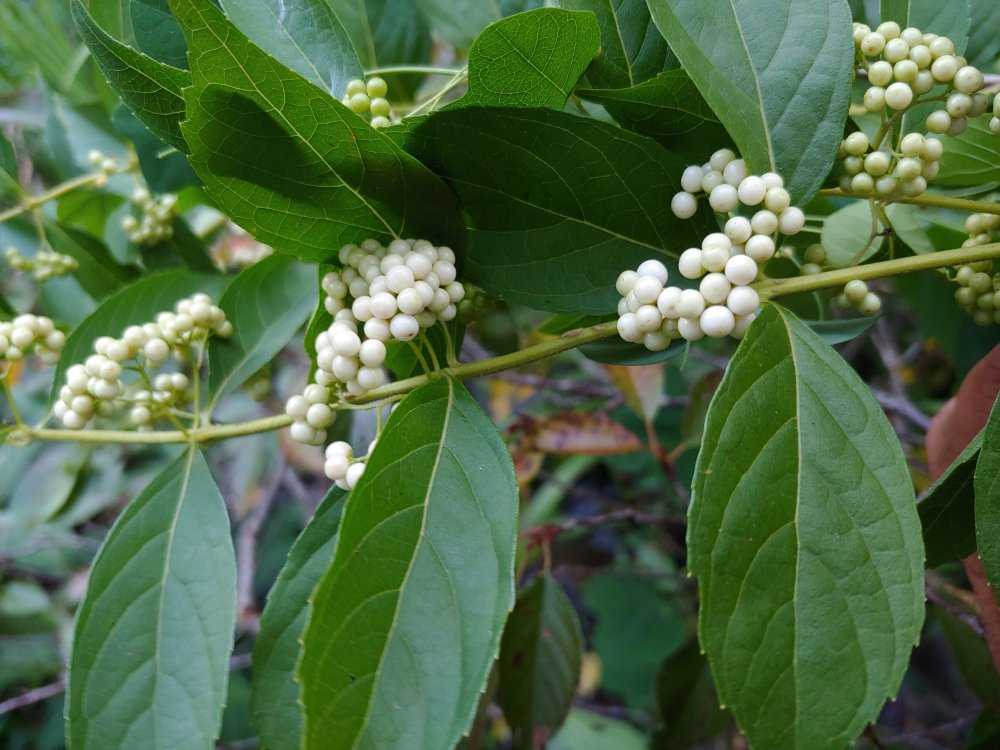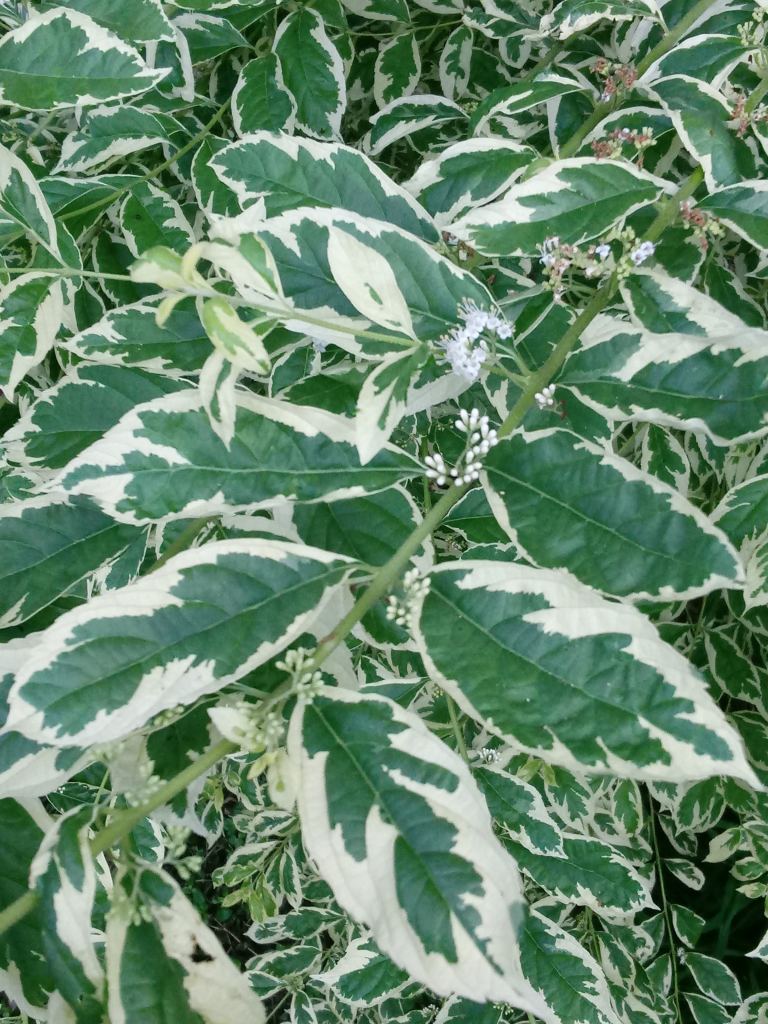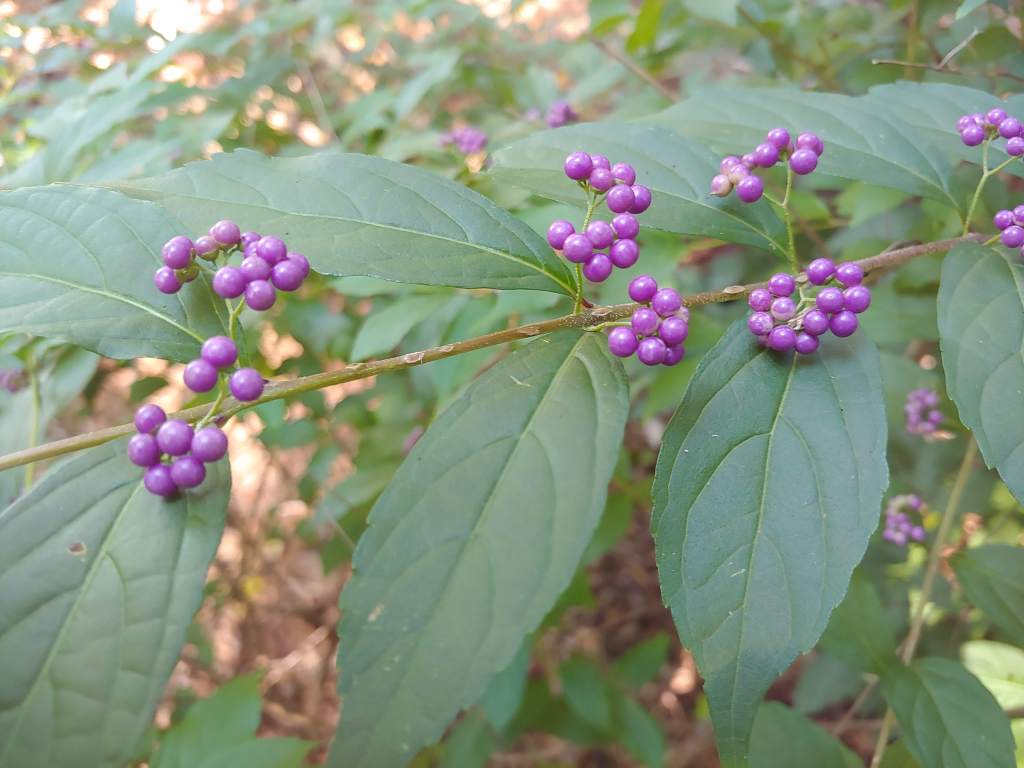I am endlessly entertained (perhaps writing too frequently) by seedlings in the garden. No, I am not enthused by weed seedlings, their removal the reason for much of the garden’s labor, but I am often fascinated with the unusual places that seedlings and sporelings (ferns) pop up.

Most seedlings must be weeded out and discarded because there are too many, or the placement doesn’t work (in the middle of a pathway), but others are allowed to grow or are transplanted. Earlier this year I noticed long branches arching out from under an Okame cherry and over the top end of the koi pond. Not a seedling that had just germinated, but hidden in the clutter until now. At the time, I guessed that the nondescript leaves were of beautyberry (Callicarpa, above), but now the identity can be confirmed.

Perhaps of interest to no one else, but this is a white berried beautyberry rather than the more typical purple berried shrubs (Callicarpa americana and C. dichotoma) that are found in the front and rear gardens. Two white berried beautyberries, one green leafed and the other with variegated leaves (Callicarpa dichotoma f. albifructa ‘Duet’, above) are planted in swampy ground in the rear garden. While the green leafed beautberry thrives, the variegated variety never seems very pleased in the damp soil. It produces a scattered few berries, but of course from one beautyberry or the other there were sufficient numbers that birds harvested the berries and deposited seeds that now grow up through the cherry.

If this seedling came up anywhere except this place it’s likely it would have been weeded out long ago, but here it will stay. From what I can tell, and it’s difficult to get close enough through branches of the cherry and two large hydrangeas, there are at least two beautyberries, both with white berries in late summer. The two tall seedlings not hurting anything except to make this area appear even more wild and unmanaged, and certainly I won’t argue about adding a bit of color.
The pictures are beautiful and the comments lovely! 😀
Who is who there? Is the new seedling the one with the whit berries and green foiage? I would guess that the variegated specimen is not a seedling, since it has a cultivar name. Are the white berried species Asian? Is there an American species or cultivar with white berries? They are not endemic here. I sort of want to try them. Even though white is my favorite color, I would probably grow the purple berried sort. It is such a cool color.
The white beautyberries are Japanese. There are purple berried American and Japanese beautyberries in the garden that are very similar, with slightly fewer berries on the American. All are unremarkable except when berries sre present.
They are remarkable to me because I have never seen one. I sort of thought the white ones were Japanese. I would probably grow the American one if I got to choose.
I find the leaves of American beautyberry ratty looking; hence my lack of interest in this native. Do you find the leaves of the Japanese varieties unremarkable, as well?
Wow …. the white berries and leaves of the Japanese varieties are more appealing to me. I especially like the Callicarpa dichotoma f. albifructa ‘Duet’.
Do you have the Japanese beautyberries placed in any type of shade conditions? Or must they be in a sunny spot?
Except for the variegated Duet, the leaves of all beautyberries are unexceptional to my eye. They are a plain green without character. Duet would be a superior selection if it had more berries, though I’m uncertain if the lacking is in my garden only. I’ve planted beautyberries in sun and shade, and the Japanese beautyberry has seeded in the shade beneath the Okame cherry, and in another partially shaded spot at the edge of the forest. Berries seem slightly more sparse in shade.
I’ll have to give ‘Duet’ a try somewhere in my Zone 7b partially shady garden. Thank you for the inspiration!